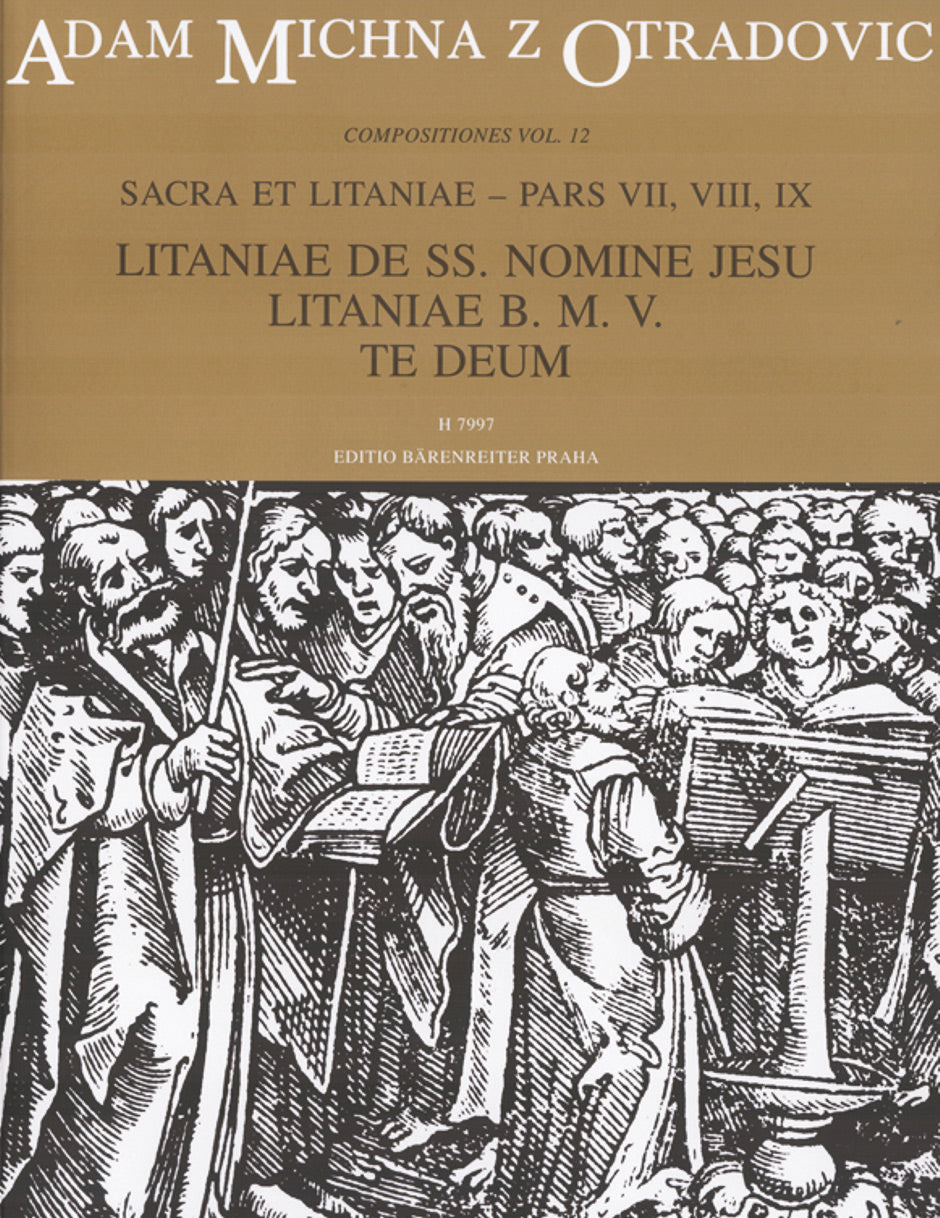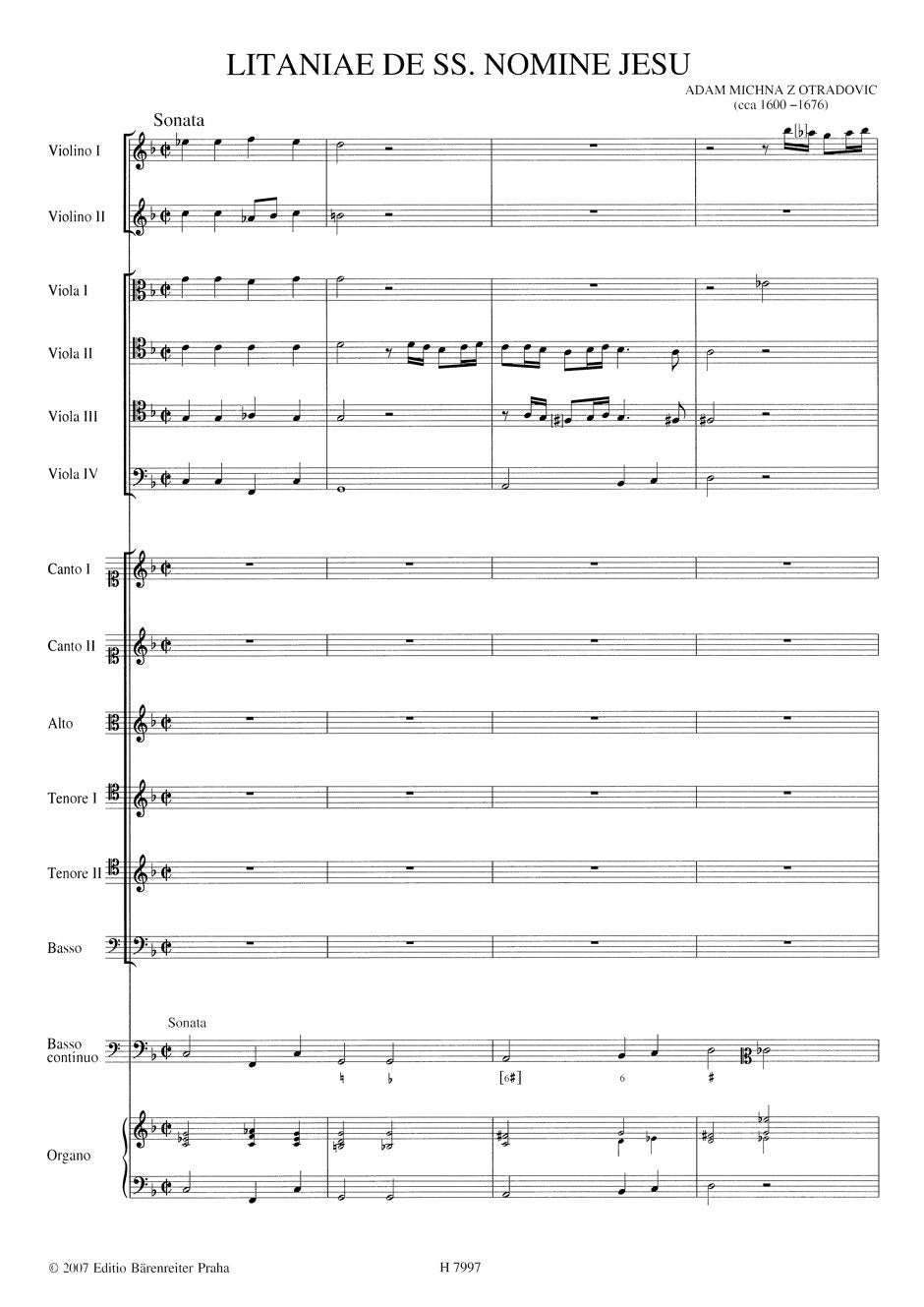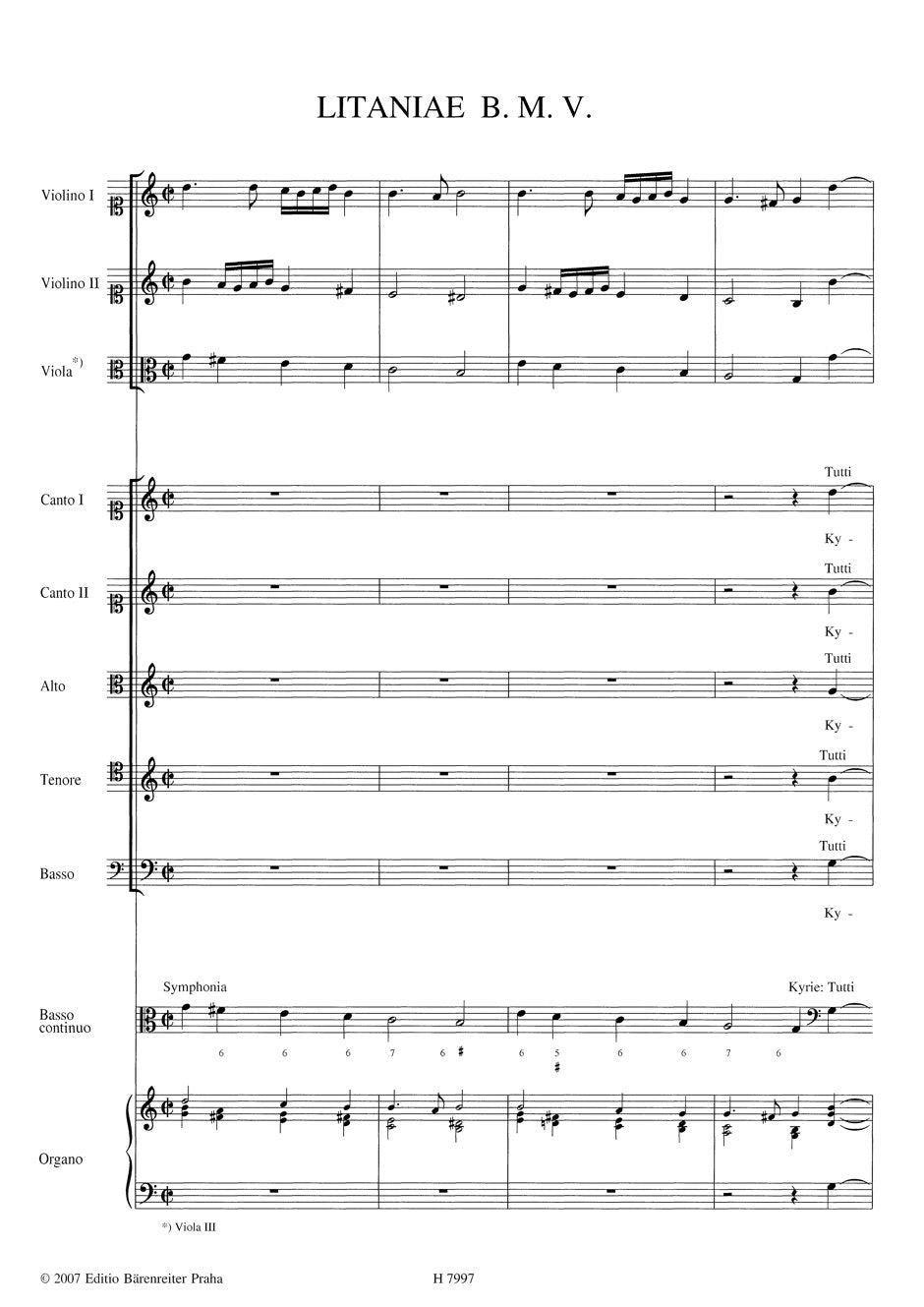Michna: Sacra et litaniae - Litaniae de SS. nomine Jesu, Litaniae B.M.V., Te Deum
Compositiones Volume 12
Expected to ship in 2-3 weeks.
- Composer: Adam Michna z Otradovic (1600-1676)
- Format: Full Score
- Instrumentation: SATB Choir, Chamber Ensemble
- Work: Sacra et litaniae
- Work Language: Latin
- ISMN:
- Size: 9.3 x 12.2 inches
- Pages: 139
Description
Adam Michna z Otradovic (1600 - 1676), a contemporary of Schütz and Carissimi, is regarded as the most remarkable figure of Czech art in the 17th century. Apart from having been an outstanding composer of both simple church songs and sophisticated figural works, he also left to posterity a highly individual output of verse. His entire known production was inspired exclusively by the world of Catholic spirituality. The twelfth volume of a new complete edition of his works contains Litaniae de SS. nomine Jesu, Litaniae B.M.V., and Te Deum. This is the final part of Michna´s most extensive collection of sacred music, Sacra et litaniae, comprised of six masses, two litanies, and a Te Deum.
The collection´s individual compositions probably date from different periods. for its part, the Sacra et litaniae was first published in 1654, like most of Michna´s production by the Academic Print of the Clementinum in Prague. The Litaniae de SS. nomine Jesu is economical in terms of duration, and is characterized by restrained expression, with the alternation of tutti, concertante soli and double choir, that last feature assigning it a solemn note. The vocal combination requires two four-voice choirs (each with four "proper" soloists), the prescribed instrumental accompaniment consisting of two violins "cum aliis instrumentis ad libitum" - here, four violas. The Litaniae B.M.V. has a five-voice choir (with two sopranos) and soloists. The instrumental accompaniment consists of two violins, a viola, plus further optional instruments "ad libitum." The Te Deum for four-voice choir with soloists, two obbligato violins and three trombones ad lib., was written for a now unknown festival occasion.The publication is introduced by the informative preface by Jirí Sehnal and critical report (V. Belský).
Contents:
- Te Deum
- Litanie B. M. V.
- Litaniae de SS. nomine Jesu
Publishers use a lot of words to describe what they sell, and we know it can be confusing. We've tried to be as clear as possible to make sure you get exactly what you are looking for. Below are descriptions of the terms that we use to describe the various formats that music often comes in.
Choral Score
A score for vocalists that only contains the vocal lines. The instrumental parts are not there for reference. Generally, cheaper than a vocal score and requires multiple copies for purchase.
Facsimile
Reproductions of the original hand-written scores from the composer.
Full Score
For ensemble music, this indicates that the edition contains all parts on a single system (there are not separate parts for each player). In larger ensembles, this is for the conductor.
Hardcover
Hardbound. Generally either linen-covered or half-leather.
Orchestral Parts
Similar to a wind set, this is a collection of parts. In the case of strings, the numbers listed are the number of copies included, though generally these are available individually (often with minimum quantities required).
Paperback
When publishers offer multiple bindings (e.g. hardcover) or study scores, this is the "standard" version. If you're planning to play the music, this is probably what you want.
Performance / Playing Score
A score of the music containing all parts on one system, intended for players to share. There are not separate parts for each player.
Set of Parts
For ensemble music, this indicates that there are separate individual parts for each player.
Solo Part with Piano Reduction
For solo pieces with orchestra, this is a version that contains a piano reduction of the orchestra parts. For piano pieces, two copies are typically needed for performance.
Study Score
A small (think choral size) copy of the complete score meant for studying, and not playing. They make great add-ons when learning concertos and small chamber works.
Vocal Score
A score prepared for vocalists that includes the piano/organ part or a reduction of the instrumental parts.
Wind Set
For orchestral music, this is a collection of wind and percussion parts. The specific quantities of each instrument are notated.
With Audio
In addition to the printed music, the edition contains recordings of the pieces. This may be an included CD, or access to files on the internet.
With / Without Fingering (Markings)
Some publishers prepare two copies - a pure Urtext edition that includes no fingering (or bowing) suggestions and a lightly edited version that includes a minimal number of editorial markings.





